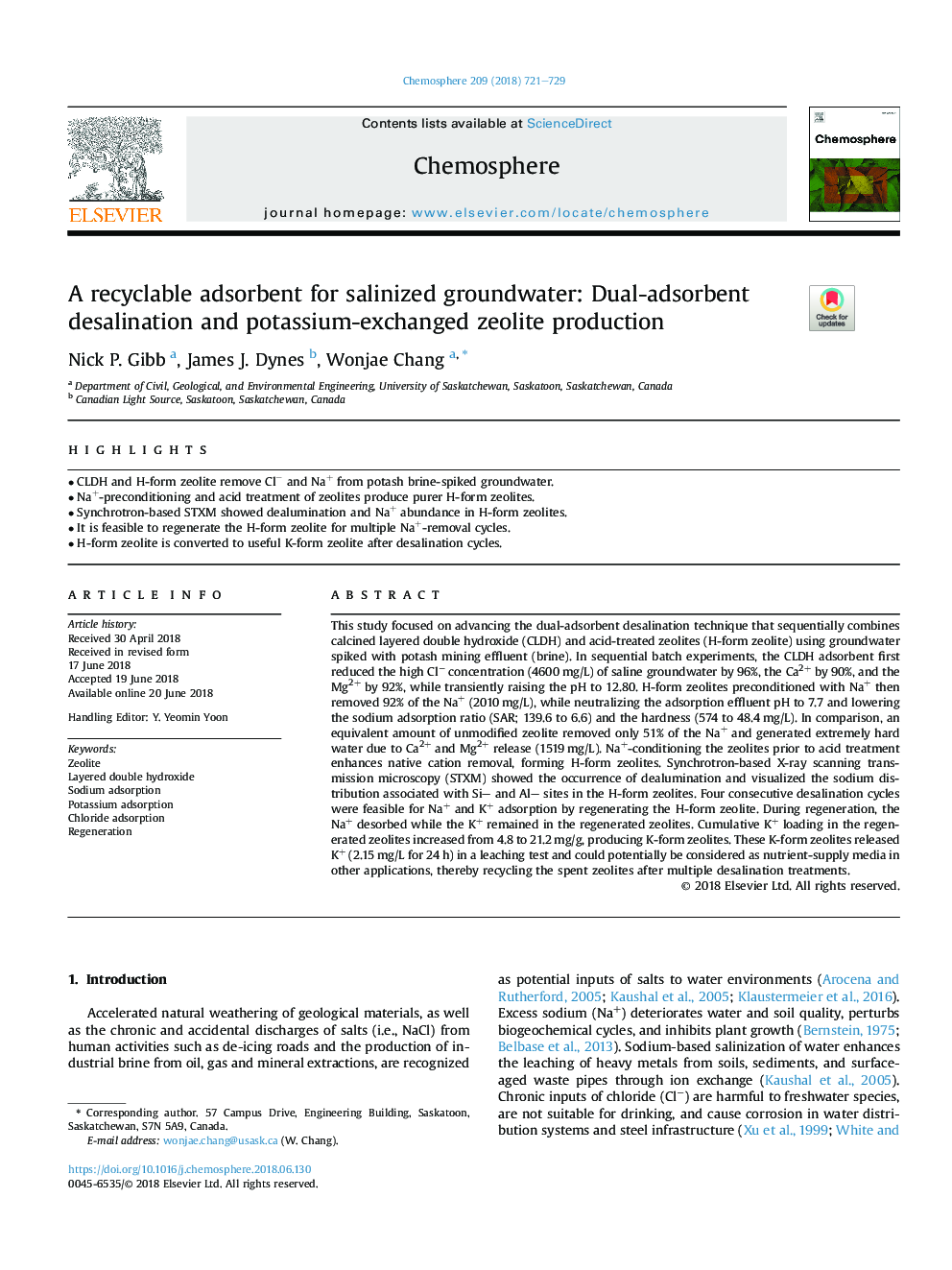| Article ID | Journal | Published Year | Pages | File Type |
|---|---|---|---|---|
| 8850649 | Chemosphere | 2018 | 9 Pages |
Abstract
This study focused on advancing the dual-adsorbent desalination technique that sequentially combines calcined layered double hydroxide (CLDH) and acid-treated zeolites (H-form zeolite) using groundwater spiked with potash mining effluent (brine). In sequential batch experiments, the CLDH adsorbent first reduced the high Clâ concentration (4600â¯mg/L) of saline groundwater by 96%, the Ca2+ by 90%, and the Mg2+ by 92%, while transiently raising the pH to 12.80. H-form zeolites preconditioned with Na+ then removed 92% of the Na+ (2010â¯mg/L), while neutralizing the adsorption effluent pH to 7.7 and lowering the sodium adsorption ratio (SAR; 139.6 to 6.6) and the hardness (574 to 48.4â¯mg/L). In comparison, an equivalent amount of unmodified zeolite removed only 51% of the Na+ and generated extremely hard water due to Ca2+ and Mg2+ release (1519â¯mg/L). Na+-conditioning the zeolites prior to acid treatment enhances native cation removal, forming H-form zeolites. Synchrotron-based X-ray scanning transmission microscopy (STXM) showed the occurrence of dealumination and visualized the sodium distribution associated with Si and Al sites in the H-form zeolites. Four consecutive desalination cycles were feasible for Na+ and K+ adsorption by regenerating the H-form zeolite. During regeneration, the Na+ desorbed while the K+ remained in the regenerated zeolites. Cumulative K+ loading in the regenerated zeolites increased from 4.8 to 21.2â¯mg/g, producing K-form zeolites. These K-form zeolites released K+ (2.15â¯mg/L for 24â¯h) in a leaching test and could potentially be considered as nutrient-supply media in other applications, thereby recycling the spent zeolites after multiple desalination treatments.
Keywords
Related Topics
Life Sciences
Environmental Science
Environmental Chemistry
Authors
Nick P. Gibb, James J. Dynes, Wonjae Chang,
